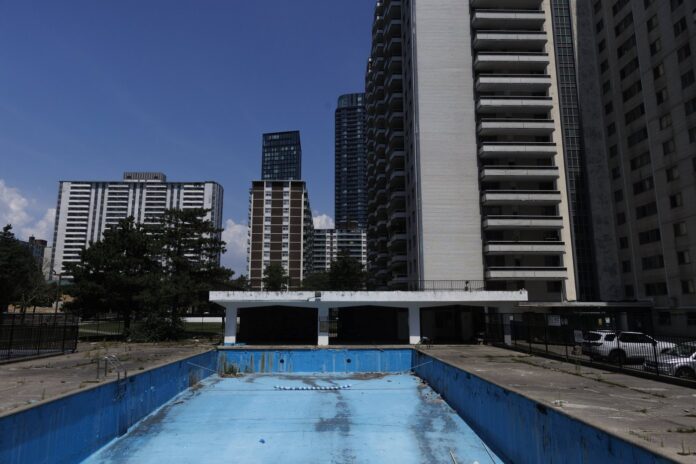“Toronto Faces Pressure to Enact Maximum Temperature Bylaw: Will it Bring Relief or Strain to Renters and Landlords?
In the midst of a scorching heatwave, Anushen Selvasegar and his family struggle to escape the stifling heat in their cramped apartment in Toronto’s St. James Town. With limited options to stay cool, they join a coalition demanding the city to implement a maximum temperature bylaw to protect residents from extreme heat.
The Call for Change
Selvasegar is part of a group advocating for a bylaw that would limit indoor temperatures to 26 degrees in residential units. This initiative aims to ensure that all buildings provide adequate cooling systems to prevent heat-related health risks, especially for vulnerable populations like the elderly and disabled.
Toronto’s Response
City officials are feeling the pressure to address the urgent need for maximum temperature regulations. Council members are considering proposals to mitigate extreme heat impacts in apartment buildings, recognizing the potential life-saving benefits of such a bylaw.
Uncharted Territory
If Toronto enacts a maximum temperature bylaw, it would be the first of its kind in Canada, setting a precedent for other cities facing similar climate challenges. However, concerns about the financial burden on landlords and the potential for rent increases have sparked debates among stakeholders.
A Balancing Act
While advocates emphasize the public health benefits of a maximum temperature bylaw, landlords worry about the costs and logistical challenges of maintaining cooling systems in their properties. Striking a balance between tenant protection and landlord affordability will be crucial in navigating this complex issue.
Looking Ahead
As Toronto grapples with the impacts of climate change and increasing extreme heat events, the decision to implement a maximum temperature bylaw will have far-reaching implications for residents and property owners alike. Finding a sustainable solution that prioritizes public health and equity should be the guiding principle in shaping future policies.
In conclusion, the push for a maximum temperature bylaw in Toronto highlights the critical intersection of climate change, public health, and housing rights. As stakeholders weigh the pros and cons of such a regulatory measure, the ultimate goal should be to create a safer and more equitable living environment for all residents. The time for action is now, as the consequences of inaction could have devastating effects on the most vulnerable members of our communities.”
Reference














